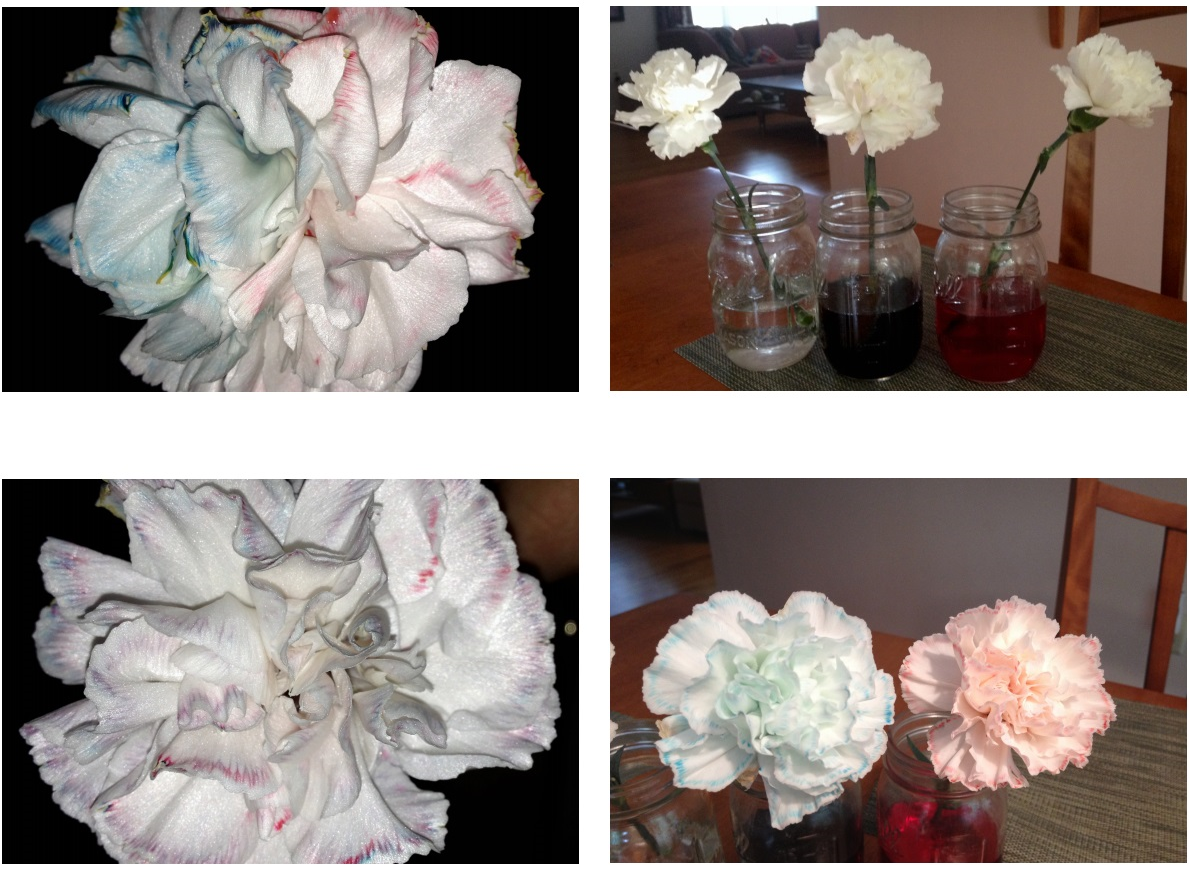Everyone knows that plants and flowers need water. Cut flowers can be kept alive in a vase for days or even weeks, provided they have enough water. Flowers are able to transport water through their stems to their petals. Usually, we can’t see this happen, but science is all about making invisible processes visible. In this experiment, we will use food coloring to help watch the flow of water from the vase, through the stem, into the petals of carnations.
This experiment is easy to set up and the results are pretty amazing. After putting some flowers into colored water, and leaving the others in plain water for a few hours/overnight, it’s easy to see, from the color changing on the petals, that water has moved up through the stem into the flower.
Many interesting variations of this experiment can be done. A flower can be first put into one color—perhaps blue, until the petals are tinted, and then placed into a different color. Will the two colors mix in the petals? What happens if the stem is split in half (only by a very careful adult!), and each half is put into a different color of water?
This experiment works well for all ages, although adult supervision is needed to when cutting the stems, particularly if the stem is cut in half vertically. Kids can try the basic experiment, and then try one of the variations, or even design their own!
Materials
• White carnations
• Food coloring
• Sturdy containers such as small vases or mason jars. Avoid lightweight containers like plastic cups as they are may easily tip over.
1. Fill two containers about half full of water.
2. Add food coloring to one container. Use a lot—30 – 40 drops per cup of water.
3. Cut several carnations so their stems are just a bit longer than the container and place some flowers in the clear and some in the colored water.
4. Put the flowers someplace where they will be easy to observe.








